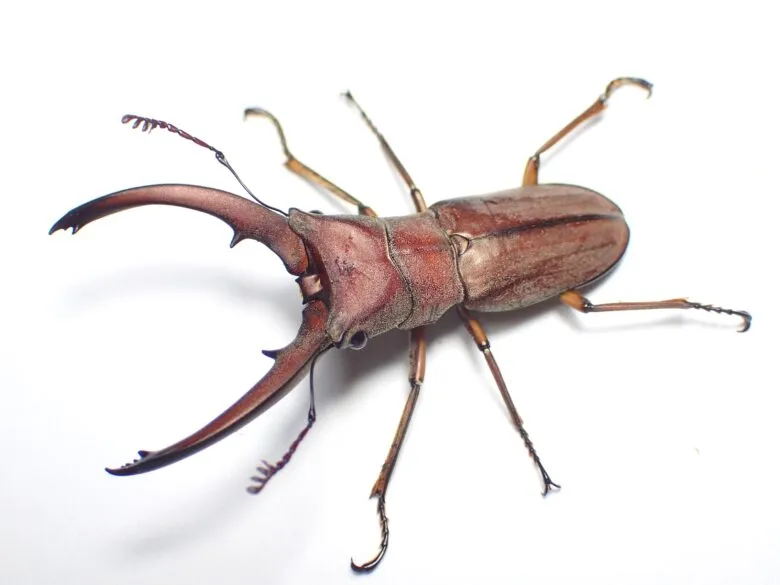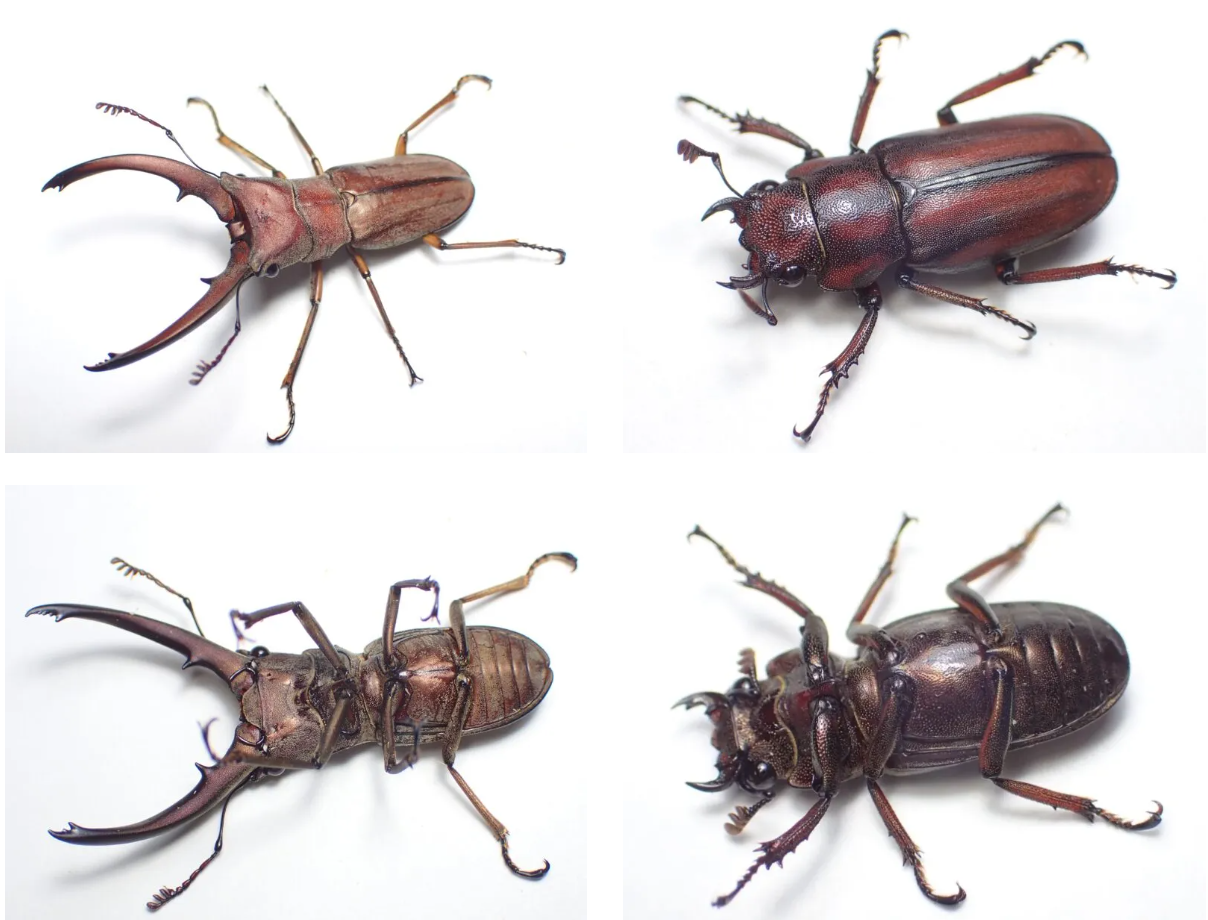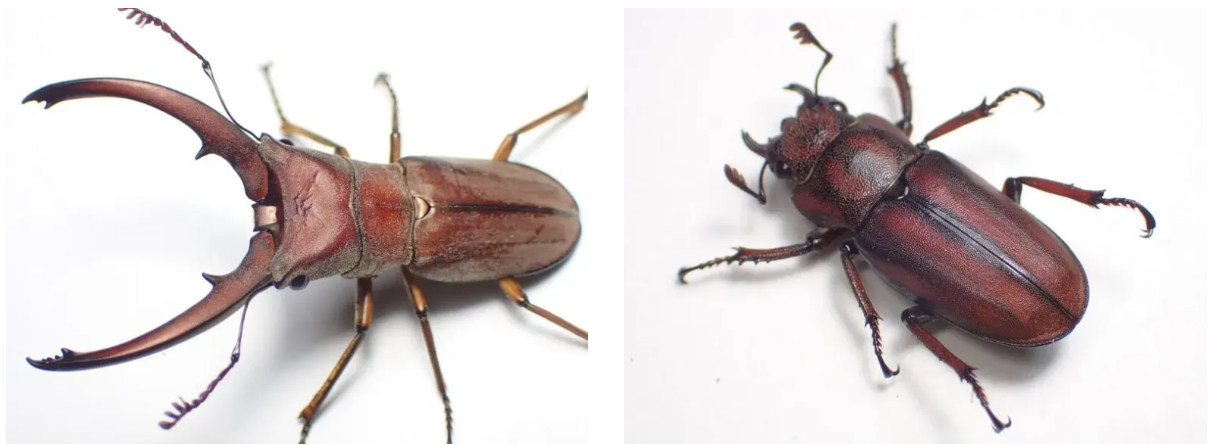
Japanese name: Canaliculatus narrow red stag beetle Java subspecies
Scientific name: Cyclommatus canaliculatus freygessneri Ritsema, 1892
Distribution: Java Island
Wild rarity: Slightly rare ★★★☆☆☆
Size: Male 28.8-53.4mm Female 17-22mm
Breeding record: 57.9mm (2019) *As of 2022 BE-KUWA reference
wild record: 58.8mm
Difficulty of breeding: Slightly difficult ★★★★☆☆
Breeding temperature: 17-25℃
Adult lifespan: About 6 months to 1 year?
Larva period: About 6 months to 1 year?
remarks
This species is a slender red stag beetle that is widely distributed in the Malay Peninsula, Sumatra, Java, Borneo, Sulawesi, etc., and it seems that there are many subspecies depending on the place of origin. Among them, this subspecies seems to be large, and from what I can see in the books I have, it seems that the Javan subspecies is the largest in both breeding records and wild specimen records. In terms of taxonomy, it seems to be closely related to Zubair and Cupreonitens.
It seems that breeding them is a bit tricky, and I don't see many reproductions in circulation. I'm going to try putting some material in there to get them to lay eggs.
According to the breeding record article, they are kept in a 900ml bottle with fermented mat. It takes about 8 months for them to emerge.

Acquired on 1/4/2024
I got a pair of wild adult insects at the B-TRON Tokyo store's lucky draw.
WD from Sukabumi, West Java (arrived 2023/11/23) Male 42mm, female 18mm

It has a brown base covered in powdery fine hairs, and is a very distinctive narrow-reeded moth. The female is incredibly small at 18mm, and is similar in size to a Nebuto... I
have little experience raising this type of narrow-reeded moth, and I have had a hard time with the Zubair narrow-reeded moth, which is taxonomically close, so I'm not sure if I'll be able to breed it successfully, but I'd like to do what I can.
2024/1/6 Egg laying set begins
Since it was a pair of outdoor products, I immediately put together an egg-laying set.
All you have to do is embed the scraps of the lychee inoculant in the egg-laying set No. 1. The container is a small Kobasha (approx.)
For more details on the set

This is the first time I've used inoculant on a narrow-spotted larva, but I thought I'd give it a try...
Since the female canaryclatus is quite small, I've adjusted the mat pressure at the top. The temperature is about 20-23°C. This is a rare WD from a large breeding area, so I hope to see more of them..





Leave a comment Use WYSIWYG